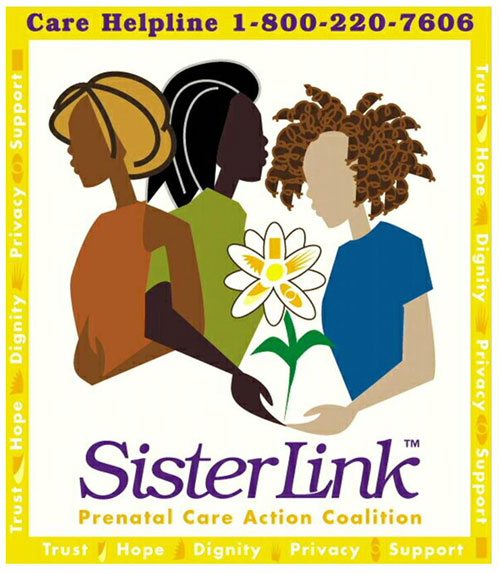Evaluation Committee Report
Common Performance Indicators to Measure MCH Outreach Tactics
Introduction:
According to Annex C the goals of outreach and referral activities includes dissemination of information, increased awareness of services, and connecting the client to service. I would add another objective which is to clear up misinformation a client might believe about a MCH service or product. If a client’s reaction to a service offering is influenced by misinformation, the job of the outreach worker is to re-educate the client to the true nature of the service offering and dispute the core arguments that are rooted in the potential customer’s mind set about the service or product.
Outreach is more than handing out flyers. It could range from direct mail tactics, flyer distribution, door-to-door engagements, radio and newspaper advertisement, tabling work, face-to-face street outreach, poster placements, street corner preaching, mass email mailings, fax blast work, brochure placements, website development, etc.
While each of the above tactics has particular strengths and weaknesses what separates excellent outreach activity from poor outreach efforts are the following performance variables: customer segmentation, developing communication pitches related to customer segments, the repetitiveness and length of time dedicated to the tactic and the social and emotional intensity of the tactic.
These four variables examined together comprise an outreach plan and if they are developed to the specifications outlined below, large numbers of targeted pregnant women will be enrolled into an MCH program. If these variables are not part of the MCH agency’s outreach protocol, then they will have difficulty enrolling new clients.
Customer Segmentation: Great outreach operations that enroll the most high-risk clients are those that understand that all women of childbearing age are not alike. These operations work from the assumption that teenagers, women over 35, homeless women, Strivers Row moms, immigrant women, substance abusing women, domestic violence victims, women who were incarcerated and women who are sex workers approach being pregnant and the pregnancy period in different ways.
Therefore, MCH organizations who attempt to outreach to the customer segments above, should take time to understand the unique needs of the above client types or combination of client types to determine what messages or engagement strategies will work with each client type.
Pitch Message Segmentation: MCH programs should develop very specific message strategies to recruit different client types into their program. If a program’s outreach staff has the same basic pitch message for all women of childbearing age, they usually have problems achieving their contract client recruitment objectives. Communication strategies to recruit teenagers into your MCH program should be very different from messages to recruit women over 35 years of age. All outreach engagement messages should communicate the importance of obtaining a pregnancy test, early prenatal care and the negative consequences of certain behaviors impact on the mother’s health and fetus before, during and after the pregnancy. Encourage mom to enroll into a particular MCH program positioning specific value propositions for each client type.
Outreach Tactic Repetitiveness and Engagement Length of Time: Outreach workers who make repetitive contacts with the same client or groups of clients will achieve better results. Having one second interactions with potential customers (handing them a flyer) does not work anymore in this business.
Repeated contacts help the outreach worker develop a relationship and builds trust with potential customers. Each perspective contact with the client type should be longer to understand what their day-to-day needs are, match services to need, clear up misconceptions about service offerings and communicate unique and specific value propositions to encourage enrollment.
Ideally, Barbara could receive a direct mail letter that is followed up with a phone contact that is then followed up with a door-to-door visit and capped with an invite to a special event. What the outreach worker has successfully done is throw a marketing fishnet over Barbara’s social situation that makes it very likely Barbara will enroll into the program.
Outreach Tactic Intensity: Many of the women outreach workers interact with face many hardships like poverty, drug addiction, domestic violence, sexual abuse and depression. Women have revealed to NMPP staff that they feel powerless and afraid to engage with health and social service systems due to the social situation above that define their current lives. These conditions sometimes are more important than obtaining prenatal care or enrolling into a perinatal case management program.
The style and tone of the communications outreach workers exhibit can determine whether a pregnant woman connects with the core public health messages and enrolls. The outreach worker might have between two seconds and ten minutes (depending on the tactic) to make a connection so the clarity and optimistic nature of the message, empathy shown, respect given, and more importantly, the authenticity (keeping it real!) of the outreach worker’s approach all correlate to a successful engagement to recruit high-risk pregnant and parenting women into your program.
Summary:
Any attempt to measure how effective an agency’s MCH outreach function is should focus on examining the professionalism of how the outreach staff (administrative & line) executes a variety of outreach tactics. The evaluator should also determine if the agency administratively approaches outreach through the development of a specific outreach plan that should include the four key performance indicators outlined above. Based on the above performance indicators, I propose a new outreach definition:
Outreach is the continuous diagnosis and analysis of the changing needs of various client types while matching messages, program offerings and value propositions to meet the specific customer segment’s needs.


